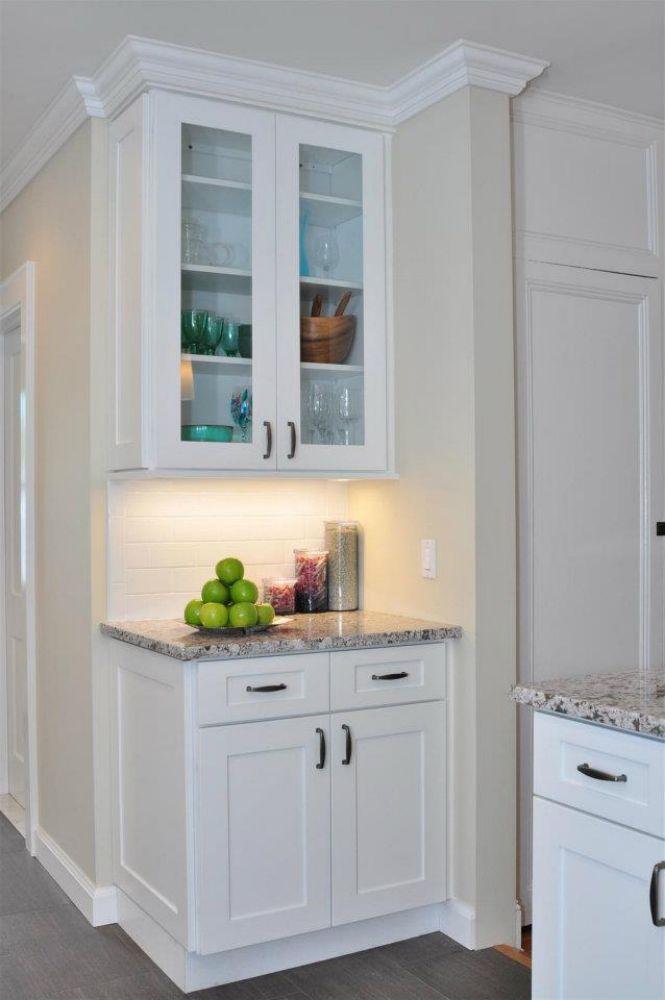The Debate Between Imported and U.S.-Made Kitchen Cabinets
Cabinetry is one of the largest investments in a kitchen remodel, both financially and aesthetically. When homeowners consider their options, one key question often arises: should they purchase imported cabinets or U.S.-made cabinets? The answer lies in understanding the differences in quality, durability, cost, and long-term value.
With today’s global supply chains, imported cabinets are widely available and often marketed as affordable solutions. At the same time, American-made cabinets are associated with craftsmanship and strict standards. For homeowners exploring kitchen cabinets, it’s crucial to weigh the benefits and drawbacks of both options to determine which best meets their remodeling needs.
Why Quality Matters in Kitchen Cabinets
Kitchen cabinets endure more wear than almost any other feature in the home. They must withstand constant opening and closing, exposure to heat and humidity, and frequent contact with spills and cleaning products. Quality determines how long cabinets will last before requiring repair or replacement. Investing in durable, well-made cabinets ensures:
-
Longevity of 15–25 years or more.
-
Resistance to warping, scratches, and dents.
-
Smooth hardware operation over time.
-
A lasting aesthetic appeal that supports home resale value.
Both imported and U.S.-made kitchen cabinets can provide quality, but the differences often lie in construction methods, material sourcing, and compliance with safety standards.
Materials Used in Imported vs. U.S.-Made Kitchen Cabinets
The material of a cabinet greatly impacts its durability and overall quality.
-
Imported Cabinets – Often use a mix of solid wood, plywood, and particleboard. Lower-priced imports sometimes rely heavily on particleboard, which is less resistant to moisture and may warp over time. Higher-end imports, however, incorporate solid wood doors and plywood construction, making them competitive with U.S.-made options.
-
U.S.-Made Cabinets – Typically emphasize solid wood doors and high-quality plywood boxes. Many U.S. manufacturers avoid particleboard entirely or limit its use to non-structural components.
Overall, while both types can use durable materials, American-made cabinets are more consistent in material quality.
Construction Quality and Techniques
The craftsmanship behind kitchen cabinets often determines how well they will perform over the years.
-
Imported Cabinets – Quality varies depending on the manufacturer. Some rely on staples and glue for drawer construction, while others use dovetail joints and reinforced corners. Lower-cost imports may sacrifice craftsmanship to cut costs, leading to reduced durability.
-
U.S.-Made Cabinets – More often feature premium construction techniques like dovetail joints, full back panels, and reinforced frames. These features ensure greater stability and longer-lasting performance.
Imported cabinets can be durable, but U.S.-made cabinets are generally more reliable due to strict quality control.
Finishes and Protective Coatings
Cabinet finishes do more than provide style—they protect surfaces from scratches, stains, and moisture.
-
Imported Cabinets – Many now use advanced finishes, including waterborne UV coatings. However, the durability and consistency of finishes can vary depending on the manufacturer and region. Some lower-priced imports use finishes that chip more easily.
-
U.S.-Made Cabinets – Finishes often meet higher standards for durability and environmental responsibility. Many brands use multi-step finishing processes that include sanding, staining, sealing, and protective topcoats.
American-made cabinets often have an advantage in finish consistency and durability, though high-quality imports can be equally competitive.
Environmental and Safety Standards
Indoor air quality is an important factor when choosing cabinets, as some materials and adhesives can release harmful chemicals.
-
Imported Cabinets – Not all imports meet U.S. standards, though reputable import brands now comply with CARB2 and EPA TSCA Title VI regulations for formaldehyde emissions. Homeowners should verify certifications before purchasing.
-
U.S.-Made Cabinets – Generally adhere to strict federal and state standards. Many also offer FSC-certified wood options, ensuring responsible forestry practices.
Both imports and U.S.-made cabinets can be eco-friendly, but U.S. manufacturing is more closely monitored.
Cost Differences Between Imported and U.S.-Made Cabinets
Cost is one of the main reasons homeowners consider imported cabinets.
-
Imported Cabinets – Usually less expensive due to lower labor and production costs. They are often ready-to-assemble (RTA), reducing shipping costs. Prices typically range from $3,000–$8,000 for a medium kitchen remodel.
-
U.S.-Made Cabinets – Tend to be more expensive due to higher labor costs, stricter regulations, and longer lead times. Semi-custom American cabinets usually cost $8,000–$15,000, while custom builds can exceed $20,000.
Imports are more budget-friendly, but U.S.-made cabinets often deliver greater long-term value.
Delivery and Lead Times
Delivery timelines often influence homeowners’ decisions.
-
Imported Cabinets – Stocked in U.S. warehouses, RTA imports can often be delivered within 1–3 weeks. However, if not in stock, international shipping delays can extend delivery by several weeks.
-
U.S.-Made Cabinets – Lead times are typically longer, especially for semi-custom or custom options, ranging from 6–12 weeks.
For homeowners on tight schedules, imports are often the faster choice.
Longevity of Imported vs. U.S.-Made Cabinets
-
Imported Cabinets – Quality imports can last 10–15 years, particularly those with solid wood doors and plywood construction. Cheaper imports relying on particleboard may last only 5–10 years.
-
U.S.-Made Cabinets – Typically last 20 years or more when properly maintained, thanks to higher material and construction standards.
Homeowners seeking long-term investment often prefer U.S.-made options.
Aesthetic Variety and Customization
-
Imported Cabinets – Generally come in a limited range of sizes and styles, with fewer customization options. However, popular finishes like white shaker, espresso, and gray are widely available.
-
U.S.-Made Cabinets – Offer broader design flexibility, including custom sizes, specialty finishes, and decorative details.
If customization is a priority, U.S.-made cabinets are superior.
Maintenance Considerations
Both imported and U.S.-made cabinets require regular cleaning and care to maximize durability. However, U.S.-made cabinets often feature sturdier finishes that require less frequent touch-ups, while lower-cost imports may show wear sooner.
Long-Term Value Comparison
While imported cabinets provide affordability and quick delivery, U.S.-made cabinets generally offer superior craftsmanship and longer lifespan. For homeowners who plan to stay in their homes for decades, American-made cabinets often provide the best long-term value. However, for investors, flippers, or those remodeling on a budget, high-quality imports can be a smart and cost-effective choice.
Conclusion – Choosing the Right Kitchen Cabinets for Your Home
When comparing imported kitchen cabinets to U.S.-made cabinets, the best choice depends on budget, timeline, and long-term goals. Imported cabinets offer affordability and quick availability, making them ideal for cost-conscious remodels or time-sensitive projects. U.S.-made cabinets, on the other hand, deliver superior craftsmanship, durability, and customization, making them better suited for long-term investments.
Homeowners who want a balance of value and quality should carefully consider the brand, certifications, and construction details of any cabinets they purchase. By selecting cabinets that combine durable materials, reliable finishes, and eco-friendly standards, homeowners can ensure that their kitchen remodel is both beautiful and built to last.
FAQs About Imported vs. U.S.-Made Kitchen Cabinets
1. Are imported kitchen cabinets lower in quality than U.S.-made cabinets?
Not always. While some low-cost imports cut corners, many reputable imported cabinets use solid wood doors, plywood construction, and eco-friendly finishes comparable to U.S.-made products.
2. How long do imported cabinets last compared to U.S.-made cabinets?
Quality imports can last 10–15 years, while U.S.-made cabinets often last 20 years or more with proper care.
3. Do imported cabinets meet U.S. environmental standards?
Reputable imports comply with CARB2 and EPA TSCA Title VI standards for formaldehyde emissions. Homeowners should always verify certifications before purchase.
4. Are imported kitchen cabinets cheaper than U.S.-made cabinets?
Yes. Imported cabinets are typically less expensive due to lower labor and shipping costs. U.S.-made cabinets cost more but provide better long-term value.
5. Which option is better for resale value?
U.S.-made cabinets generally add more resale value due to their reputation for durability and craftsmanship. However, high-quality imports can also appeal to buyers if well maintained.
Read: What kitchen cabinets are best for maximizing small apartment kitchens?
Read: Are ready-to-assemble kitchen cabinets a reliable choice for remodels?

